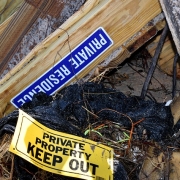Black Mold in Prisons is a Growing Problem
Summary
All across the U.S. black mold in prisons is a growing problem. Black mold is also known as Aspergillus. Union leaders are worried about the impact on correctional officers.
Moreover, California is among the states with extensive complaints. At the Mendota prison, prison guards say no air conditioning and toxic black mold at high levels are making both inmates and staff sick.
No Remediation Efforts
Officers are working in prisons where mold is making them sick, because many prison leaders refuse to treat it. Extensive mold is found in areas populated by both officers and inmates.
Due to policies started in 2015, prison leaders are stalling remediation of the molds, including refusing to hire qualified companies to adequately eliminate it.
As a result, Union leaders are expressing grave concern. Recently, a Union memo stated, “Currently there is no OSHA standard for unacceptable levels of mold in the workplace .”
Also, it says bureau officials “do not recommend hiring an outside contractor as a first step.”
To clarify, the memo, written by Sylvie Cohen, the Bureau of Prisons chief of occupational and employee health, is understood by wardens to mean potentially harmful mold. In particular, it indicates the black mold in prisons that employees breathe in every day at work should not be tested.
Additionally, they site the facts that there is no OSHA standard for unacceptable levels of mold in the workplace. The first paragraph of the memo reads. “According to OSHA, it is generally not necessary to identify the specific genus and species of mold.”
In conclusion, Union leaders report multiple health issues. Current and former prison employees have to breathe in the mold without protective gear. Multiple union leaders said prison leadership started addressing the mold only when they threatened to talk to the press.
Read more about this situation in the Miami Herald’s Special Report on prison conditions.



 pixabay.com
pixabay.com  Image by
Image by 



